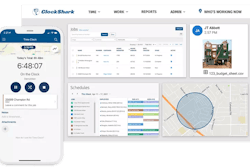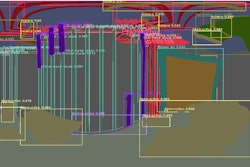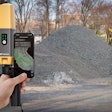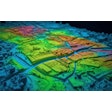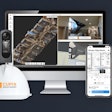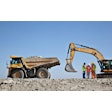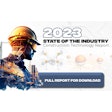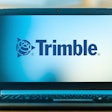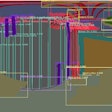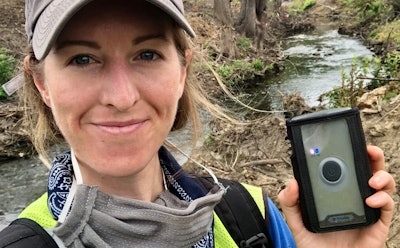
Thanks for joining us on Construction Tech Talk for another product snap shot. This is Technology Editor Charles Rathmann. So few things can slow down the start of construction like a wetland delineation made necessary by wetlands on or near a construction site. If you’re with in environmental engineering, listen up, or if you know someone who is, send them this link because we’re about to talk about a cool tool called Ecobot. Projects impacting wetlands permit. And that means you need to delineate the wetlands’ location and size and any impacts on that wetland from the project. We need our wetlands as habitat for fish and birds and other animals and because they act like giant sponges that reduce flooding following heavy rainfall events. So this is important stuff. But it’s inconvenient, right? Well, maybe not as much as it used to be. Asheville North Carolina-based Ecobot got funding in 2021 by Sass Ventures in Washington DC and Shadow Ventures in Atlanta and attracted additional investment in January of 2022 from these two and seven additional investors. When experienced investors hook up with a software company there is a strong value proposition.
And yes, Ecobot enables completion of a wetlands delineation in half the time. That’s kind of a big deal because wetlands can present a serious risk to a construction timeline or permitting, and the borders of that wetland must be defined and a mitigation plan arrived at before dirt starts moving on the site. That wetlands delineation really requires soil scientists and ecologists with boots on the ground—drones don’t work because you need to identify specific species of plants associated with different classes of wetlands, determine how wet the ground is, gauge color and texture of the soil, record visible hydrology, recording all of this by location. The work is repetitive and time consuming and then back office processes have to be completed to turn findings into the final deliverable. Folks doing this field work are out there as long as it is light out and then crash in a motel room. The idea is to increase their productivity and eliminate admin work done in the office.
Ecobot does this and gives engineering firm managers consistent data across teams and instant access to reports, depending on data connectedness. And it does this in three ways.
First, the app can harness the geolocation function of the mobile device, but is more commonly paired with GNSS devices from Trimble, EOS Juniper or SXBlue—the satellite connectivity helps where cell reception is poor enhances accuracy to the sub-meter level. Projects for the US Army Corps of Engineers usually require this. Observations entered in a streamlined interface are accurately reflected on a map—the company has a partnership with Esri which means they can actually create a digital twin of the natural environment.
Second, the app automatically performs standard calculations on quantitative data entered, helping field scientists determine if there are impacts that need to be mitigated or avoided.
Finally—reference sources. Critical regulatory data and field guides are embedded in the downloaded app, so miles from the internet a field scientist has in their hand the USACE Wetlands Delineation Manual, the National Wetland Plant List and others. Ecobot refreshes this content regularly as regulation and reference materials are updated.
One cool feature … Environmental assessments for highway construction or widening often involve wetlands delineation as part of an environmental assessment. Field scientists would normally be faced with repetitive tasks as they moved along that linear project site. Now, they can clone the last sampling point if conditions are the same or change specific fields when data is different. Roadmap items for the future include elevation capture for each data point.
But as it is, the tool takes an existing process users know well and digitizes it effectively cutting the project timeline in half. In some cases construction projects have been able to start early or begin on parallel with the wetlands assessment.
So what’s the product made of? This gets to be important because while the technology in the product is obscured from end users in the cloud, if it doesn’t work it is still pretty much your problem. The product is housed on Amazon Web Services and uses one of the services AWS provides—Lambda—to create what is called a headless architecture. That means Ecobot doesn’t have to pay for compute power it isn’t using while keeping the software performant. Apart from capacity management, Lambda automates, scaling, patching and administration of the infrastructure. Anytime you hear me mention a software vendor on AWS I will mention the recent outages and encourage people evaluating these products to ask about what specific measures there are for failover from one AWS node to another or to another cloud.
Ecobot President Lee Lance told me they had not been affected by the outages—which makes sense because the application is used primarily offline. The application also uses a load balancer to distribute compute demands across multiple availability zones. And the data Ecobot moves up and down to AWS is in the megabytes range, not gigabytes, so movement of data to and from the cloud is less likely to be disrupted.
For its customers performing work for the federal government, Ecobot has achieved Fedramp Moderate Compliant level with the Federal Risk and Authorization Management Program—or FedRAMP. And Ecobot partner Esri is one of only 125 listed approved vendors, and has FedRAMP Authorization for Cross-Cloud Location Intelligence. So the company has its tech house in order, and is relying on solid partnerships to deliver compliance with federal security regulations. The software has a strong value proposition that speeds construction projects to completion.
These venture capitalists can pick winners—Ecobot is experiencing quick uptake in the market. In all 18 of the ENR Top 200 environmental services firms are customers. Plus large engineering firms with in-house environmental departments. Other customers include smaller firms doing work for larger ones, but the product is financially viable for a one-person consulting shop, maximizing the addressable market.
Solving a longstanding problem, the Infrastructure and Jobs Act, growth of private investment in compensatory ecosystem mitigation credits … all of these things are driving adoption for Ecobot and should into the foreseeable future. So let’s talk about price.
Ecobot sells individual seat licenses. But there are two other models that could be attractive to different customer organizations. Companies where the number of field scientists may fluctuate up or down may just want to pre-buy large blocks of capacity, measured by sampling point. The largest customers can negotiate with Ecobot for an enterprise license agreement. Back of the napkin math suggests pretty quick time to value based on billable time saved. And a shorter project timeline also has value and can make an engineering firm more attractive to work with.
One environmental engineering firm working on a pipeline project in the southern coastal plane of Alabama had a 30 day timeline … along the 50 mile project corridor, they identified 20 wetlands. The client wanted all the data sheets every week by 5 p.m. on Friday. That doesn’t leave much time to deliver reporting.
Using Ecobot, they were able to record 570 sampling points and automate completion of a three-page government form on each one of those points. They tripled expected profit margin and I don’t think the project could have been completed within the timeline without an optimized digital process.
So here is the bottom line on Ecobot. The company is small—about a dozen when I debriefed company leadership and they planned to use some venture capital to scale up by 50 to 100 percent. The only competition is Excel, some homebaked solutions or generic tools like Survey 1-2-3. Anyone doing wetlands delineation work would be well served by this tech. But surprises are for birthdays. And venture capital looks for an exit strategy at some point. Even if Ecobot gets into other environmental field work disciplines, it likely won’t be going public. If I were a betting man, I’d bet Ecobot is purchased by an adjacent technology provider in the years to come. Ecobot relies heavily on partners to go to market—including Trimble and Esri. But this is some very valuable tech that is not going away any time soon.


